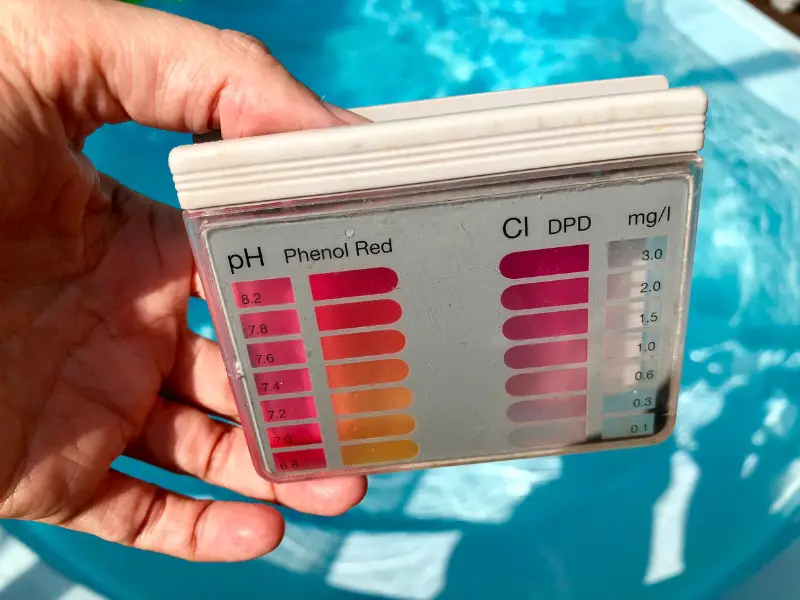High pH levels in a fish tank can be harmful to the aquatic life. Fish tanks are designed to mimic the natural habitat of fish, and pH is an essential factor in maintaining a healthy environment. A pH level that is too high can lead to various symptoms and can even result in death.
One of the most common symptoms of high pH in a fish tank is the loss of appetite in fish. Fish may become lethargic and refuse to eat, leading to malnutrition and weight loss. Additionally, fish may become more susceptible to diseases and infections when the pH level is too high.
Another symptom of high pH in a fish tank is the development of algae on the tank walls and decorations. Algae thrive in high pH environments and can quickly take over the tank, blocking light and oxygen from reaching the fish. This can lead to a decrease in oxygen levels and an increase in carbon dioxide, which can be harmful to the fish.
Understanding pH in Fish Tanks
Maintaining the correct pH level in a fish tank is crucial for the health and well-being of the fish. pH is a measure of the acidity or alkalinity of the water, and it can have a significant impact on the fish’s ability to breathe, digest food, and fight off diseases.
The pH scale ranges from 0 to 14, with 7 being neutral. A pH below 7 is acidic, while a pH above 7 is alkaline. Most freshwater fish prefer a pH between 6.5 and 7.5, although some species may require a more specific range.
There are several factors that can affect the pH level in a fish tank, including:
- The source of the water used to fill the tank
- The type of substrate used in the tank
- The presence of plants or other organisms in the tank
- The amount and frequency of water changes
- The use of chemicals or medications in the tank
It is important to regularly test the pH level in the tank using a reliable test kit. If the pH is too high or too low, steps should be taken to adjust it gradually. Sudden changes in pH can be stressful or even fatal to fish.
In conclusion, understanding pH in fish tanks is essential for maintaining a healthy and thriving aquatic environment. By monitoring and adjusting the pH level as needed, fish owners can help ensure the well-being of their fish.
Recognizing High pH Symptoms

When the pH level in a fish tank is too high, it can cause a variety of symptoms in fish. Here are some common signs to look out for:
1. Lethargy
Fish with high pH levels in their tank may become lethargic and spend more time resting on the bottom of the tank. They may also swim slower than usual and appear less active.
2. Gasping for Air
Fish may start gasping for air at the surface of the water if the pH level is too high. This is because high pH levels can reduce the amount of oxygen in the water, making it harder for fish to breathe.
3. Red or Inflamed Gills
High pH levels can irritate a fish’s gills, causing them to become red or inflamed. This can make it difficult for fish to breathe and may lead to other health problems.
4. Loss of Appetite
Fish may also lose their appetite if the pH level in their tank is too high. This can be a sign of stress and can lead to other health problems if not addressed.
5. Behavior Changes
Fish with high pH levels in their tank may exhibit unusual behavior such as swimming erratically or rubbing against objects in the tank. This can be a sign of discomfort or irritation.
It’s important to monitor the pH level in your fish tank regularly to ensure that it stays within a healthy range. If you notice any of these symptoms, it’s a good idea to test your water and make any necessary adjustments to bring the pH level back to a safe range.
Physical Symptoms in Fish
When the pH level in a fish tank is too high, it can cause physical symptoms in the fish. These symptoms can vary depending on the species of fish and the severity of the pH imbalance.
One common physical symptom is fin rot. This is when the fins of the fish become frayed or discolored. The fish may also have trouble swimming or may appear lethargic. Another symptom is redness or irritation around the gills. The fish may also have difficulty breathing.
In addition to these symptoms, fish may also experience skin irritation or discoloration. This can manifest as white spots or patches on the skin, or as a general discoloration of the entire body. In severe cases, the fish may also experience sunken eyes or a bloated abdomen.
It is important to note that these symptoms can also be caused by other factors, such as poor water quality or disease. Therefore, it is important to properly diagnose the cause of the symptoms before attempting to treat them. If you suspect that your fish may be experiencing physical symptoms due to a high pH level, it is recommended that you consult with a veterinarian or aquatic specialist for advice on how to proceed.
Behavioral Changes in Fish
High pH levels in a fish tank can cause various behavioral changes in fish. These changes may include:
- Lethargy: Fish may become less active and spend more time resting at the bottom of the tank.
- Aggression: Some fish may become more aggressive towards other fish in the tank.
- Gasping for air: Fish may appear to be gasping for air at the surface of the water.
- Loss of appetite: Fish may lose their appetite and refuse to eat.
- Erratic swimming: Fish may swim erratically or appear to be disoriented.
It is important to note that not all fish will exhibit these symptoms and the severity of the symptoms may vary depending on the species of fish and the extent of the pH imbalance. Therefore, it is important to monitor the behavior of fish in the tank and take corrective action if necessary to maintain a healthy environment for the fish.
Tank Environment Indicators

Maintaining a healthy environment for fish is essential to their survival. High pH levels in a fish tank can cause stress, illness, and even death. It is important to monitor the pH levels in the tank and take action if they become too high. Here are some indicators to look out for:
- Algae growth: High pH levels can cause an increase in algae growth in the tank. Algae can compete with fish for oxygen and nutrients, leading to stress and illness.
- Cloudy water: High pH levels can cause the water in the tank to become cloudy. This can be due to an increase in dissolved minerals and other substances in the water.
- Fish behavior: Fish may exhibit unusual behavior in a tank with high pH levels. They may become lethargic, lose their appetite, or even swim erratically.
- Plant health: High pH levels can also affect the health of plants in the tank. Plants may become yellow or brown, or even die off completely.
If any of these indicators are present in your fish tank, it is important to test the pH levels and take appropriate action. This may include adjusting the pH levels using chemicals or adding natural substances like driftwood or peat moss to the tank. Regular water changes and proper maintenance can also help prevent high pH levels in the first place.
Long-Term Effects of High pH
When a fish tank’s pH levels remain high for a long time, it can have several negative effects on the fish living in it. Here are some of the long-term effects of high pH:
1. Increased Stress
Fish are sensitive to changes in their environment, and high pH levels can cause stress and discomfort. This can lead to a weakened immune system, making them more susceptible to diseases and infections.
2. Reduced Lifespan
High pH levels can also reduce the lifespan of fish. This is because high pH levels can cause damage to the fish’s gills, which can make it harder for them to breathe. Over time, this can lead to respiratory problems and eventually death.
3. Poor Growth
Fish in a tank with high pH levels may also experience poor growth. This is because high pH levels can interfere with the absorption of nutrients, which are essential for growth and development.
4. Altered Behavior
Fish may also exhibit altered behavior in a tank with high pH levels. They may become more aggressive or lethargic, and may not eat as much as they should.
It is important to monitor the pH levels in your fish tank regularly to ensure that they remain within a healthy range. If you notice that the pH levels are consistently high, take steps to lower them to prevent these long-term effects on your fish.
Conclusion
In conclusion, it is important to monitor the pH levels in a fish tank regularly to ensure the health of the fish. High pH levels can cause stress and discomfort to fish, which can lead to illness and even death.
Some of the common symptoms of high pH levels in fish include lethargy, loss of appetite, gasping for air at the surface, and discolored or damaged fins. These symptoms can be easily misinterpreted as other health issues, so it is important to test the pH levels of the water to confirm the cause of the problem.
Once high pH levels have been identified, steps can be taken to lower them. This can include adding pH-lowering chemicals, such as vinegar or citric acid, or using natural methods, such as adding peat moss or driftwood to the tank. It is important to make changes slowly and monitor the pH levels closely to avoid sudden drops or spikes.
Overall, maintaining a healthy pH level in a fish tank is crucial for the well-being of the fish. By monitoring the water quality regularly and taking appropriate action when needed, fish owners can ensure that their pets live long and healthy lives.
Related Articles: